For Product Registration and general enquires please contact us
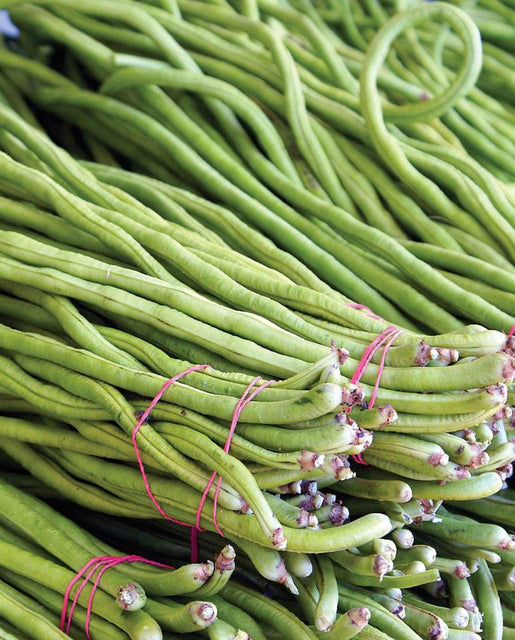
Asparagus Beans
$9.99 – $89.99
Asparagus Bean seeds are also known as yard long beans. This attractive plant is botanically different from regular pole beans and bears the tongue-twisting Latin name Vigna unguiculata sesquipidalis.
Shipping & Returns
West Coast Seeds ships anywhere in North America. However, we are not able to ship garlic, potatoes, asparagus crowns, bulbs, onion sets, Mason bee cocoons, or nematodes outside of Canada. We regret, we cannot accept returns or damages for orders outside of Canada. The minimum shipping charge to the US is $9.99.
Description
More details about Asparagus Beans
Vigna unguiculata sesquipidalis. Asparagus Bean seeds are also known as yard long beans. This attractive plant is botanically different from regular pole beans and bears the tongue-twisting Latin name Vigna unguiculata sesquipidalis. At first this plant appears to grow as a bush, but when summer heat comes along, it bursts into vertical growth with twisting vines, and purple flowers, followed by fast-growing pods that are meant to be harvested at 60-65cm (24-26”) in length. Even at that amazing size, the beans are just over 1cm (½”) thick, tender, and tasty. These beans feature prominently in Asian cuisines, and are most productive in hot weather. Start indoors mid-spring, and transplant as soon as the soil warms up at the solstice. Matures in 95 days. (Open-pollinated seeds)-
- Pole Beans
- Most productive in hot weather
- Prominent in Asian recipes
- Fast-growing pods
- Matures in 95 days from indoor start
All About Asparagus Beans
Latin
Phaseolus vulgaris
Family: Fabaceae
Difficulty
Easy
Season & Zone
Season: Warm Season
Exposure: Full-sun
Timing
Direct sow from late spring to early summer. Try to plant during a warm, dry spell. Soil must be warm – if it is not warm enough, seeds may rot, especially our untreated seeds. Optimal soil temperature: 21-32°C (70-90°F).
Starting
Seeds can be started indoors, or sowed directly. Set seeds 7-10cm (3-4″) apart and 3.5cm (1½”) deep at the base of a support. Plants will climb by twining around almost anything. Try rough poles, lumber, re-bar, or build a strong trellis 2-2.5m (6-8′) tall. Seeds will sprout in 8-16 days, depending on soil conditions.
Growing
Ideal pH: 6.0-6.5. Well drained, warm soil in full sun is best. Use 1 cup of balanced organic fertilizer for every 3m (10′) of row. Too much nitrogen in fertilizer or manure is often the cause of poor pod set and delayed maturity. If beans flower but do not set pods, the cause can be zinc deficiency. Try spraying the plants with kelp based fertilizer. Wet leaves on crowded plants are subject to diseases. Thin plants to increase air circulation and avoid touching the leaves while they are wet.
Harvest
Because pole beans are always climbing, there are always beans at different stages of maturity. It is important to keep picking regularly so the plant does not fully mature seeds and stop producing new pods. If pods get fat with seed, the plant will stop flowering. The smaller the bean, the more tender they are.
Seed Info
In optimal conditions at least 75% of seeds should germinate. Usual seed life: 3 years. Per 100′ row: 400 seeds. Per acre: 43.5M seeds.
Diseases & Pests
If beans flower but do not set pods, the cause can be a zinc deficiency. Try spraying the plants with Kelpman. Wet leaves on crowded plants are subject to diseases. Thin plants to increase air circulation and try not to touch the plants while they are wet.
Companion Planting
Beans fix nitrogen in the soil. Plant with Brassicas, carrots, celery, chard, corn, cucumber, eggplant, peas, potatoes, radish, and strawberries. Avoid planting near chives, garlic, leeks, and onions. Pole beans and beets stunt each other’s growth.






How to Grow Pole Beans

Step 1: Timing
Direct sow from late spring to early summer. Try to plant during a warm, dry spell. Soil must be warm – if it is not warm enough, seeds may rot, especially our untreated seeds. Optimal soil temperature: 21-32°C (70-90°F).
Step 2: Starting
Seeds can be started indoors, or sowed directly. Set seeds 7-10cm (3-4″) apart and 3.5cm (1½”) deep at the base of a support. Plants will climb by twining around almost anything. Try rough poles, lumber, re-bar, or build a strong trellis 2-2.5m (6-8′) tall. Seeds will sprout in 8-16 days, depending on soil conditions.
Step 3: Growing
Ideal pH: 6.0-6.5 Well drained, warm soil in full sun is best. Use 1 cup of balanced organic fertilizer for every 3m (10′) of row. Too much nitrogen in fertilizer or manure is often the cause of poor pod set and delayed maturity. If beans flower but do not set pods, the cause can be zinc deficiency. Try spraying the plants with kelp based fertilizer.
Step 4: Germination
Days to maturity: From direct sowing. In optimal conditions at least 75% of seeds should germinate. Usual seed life: 3 years. Per 100′ row: 400 seeds. Per acre: 43.5M seeds.
Step 5: Harvest
Because pole beans are always climbing, there are always beans at different stages of maturity. It is important to keep picking regularly so the plant does not fully mature seeds and stop producing new pods. If pods get fat with seed, the plant will stop flowering. The smaller the bean, the more tender they are.
Tips!
Wet leaves on crowded plants are subject to diseases. Thin plants to increase air circulation and avoid touching the leaves while they are wet. Diseases & Pests: If beans flower but do not set pods, the cause can be a zinc deficiency. Try spraying the plants with Kelpman. Companion Planting: Beans fix nitrogen in the soil. Plant with Brassicas, carrots, celery, chard, corn, cucumber, eggplant, peas, potatoes, radish, and strawberries. Avoid planting near chives, garlic, leeks, and onions. Pole beans and beets stunt each other’s growth.Additional information
| Matures | in 95 days |
|---|---|
| Season | Warm season |
| Exposure | Full-sun |
| Quantity | 10g, 25g, 100g, 500g |
You must be logged in to post a review.




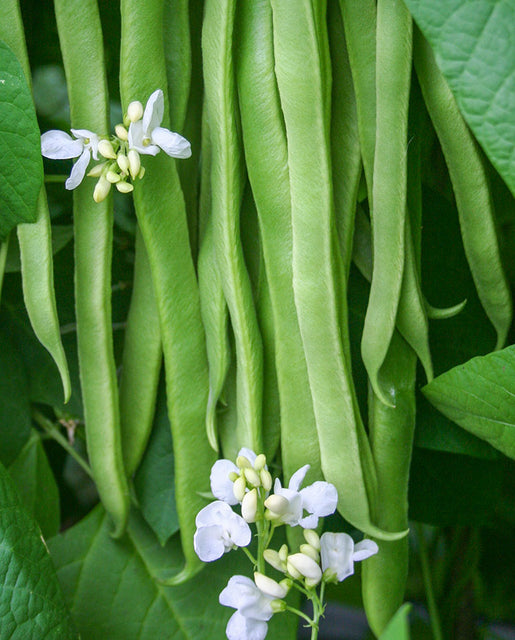
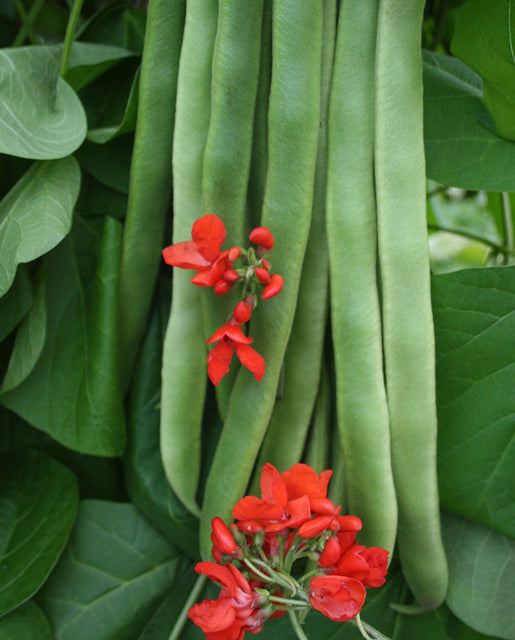
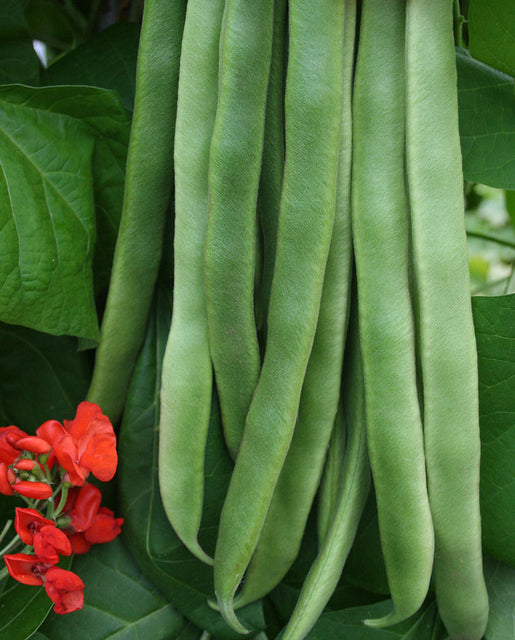
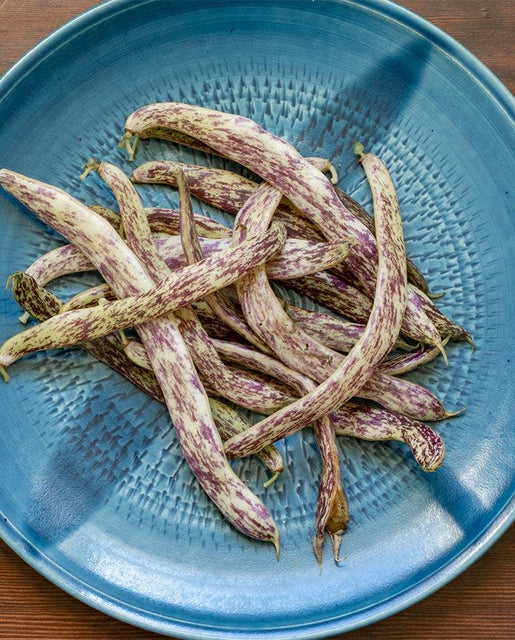
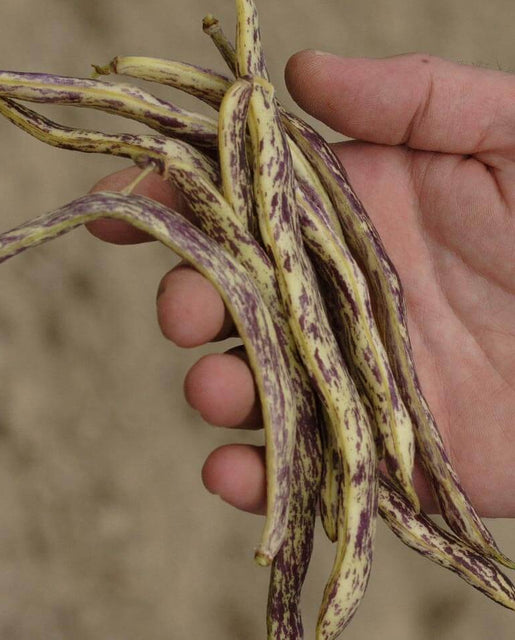





Reviews
There are no reviews yet.